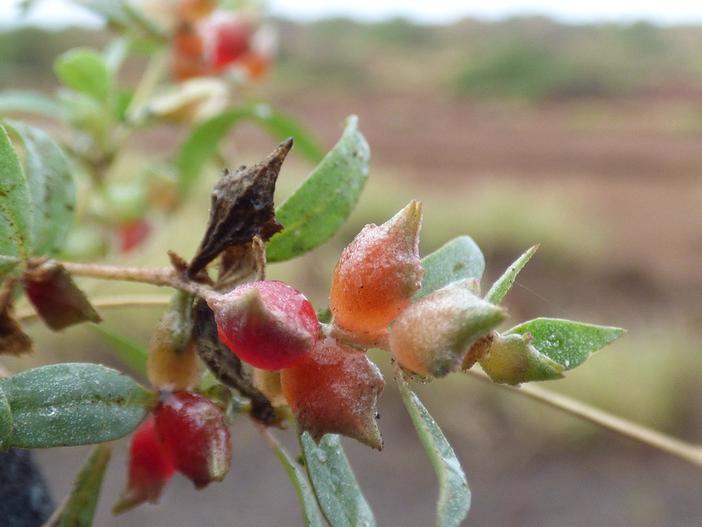Australian Saltbush
(Atriplex semibaccata)
Australian Saltbush (Atriplex semibaccata)
/
/

Forest and Kim Starr
CC BY 2.0









































































Estimated Native Range
Summary
Australian Saltbush is valued for its drought tolerance and ability to thrive in poor soils, making it an excellent choice for xeriscaping and erosion control. In cultivation, it requires full sun, minimal water, and well-drained soils. It is also used in landscaping for its foliage and as a ground cover. However, gardeners should be aware of its potential invasiveness outside its native range, as it can spread aggressively in regions like California, South America, South Africa, and the Mediterranean. It is recommended to consult local regulations before planting Atriplex semibaccata to ensure it is not considered invasive in the area.CC BY-SA 4.0
Plant Description
- Plant Type: Subshrub, Shrub, Herb
- Height: 1.5-2.5 feet
- Width: 1.5-2 feet
- Growth Rate: Slow
- Flower Color: N/A
- Flowering Season: Winter, Spring
- Leaf Retention: Evergreen
Growth Requirements
- Sun: Full Sun
- Water: Low
- Drainage: Medium, Fast
Common Uses
Bank Stabilization, Drought Tolerant, Edible*Disclaimer: Easyscape's listed plant edibility is for informational use. Always verify the safety and proper identification of any plant before consumption., Fire Resistant, Low Maintenance, Street Planting
Natural Habitat
Arid and semi-arid regions including plains and scrublands
Other Names
Common Names: Berry Saltbush, Creeping Saltbush, Diamond Saltbush, Half-Berry Saltbush, Pasto Salado, Alfalfa-Arbórea
Scientific Names: , Atriplex semibaccata, Atriplex semibaccata var. appendiculata, Atriplex stuckertii, Atriplex denticulata, Atriplex semibaccata var. typica, Atriplex flagellaris, Atriplex neurivalvis, Atriplex semibaccata var. biformis, Atriplex semibaccata var. gracilis
GBIF Accepted Name: Atriplex semibaccata R.Br.